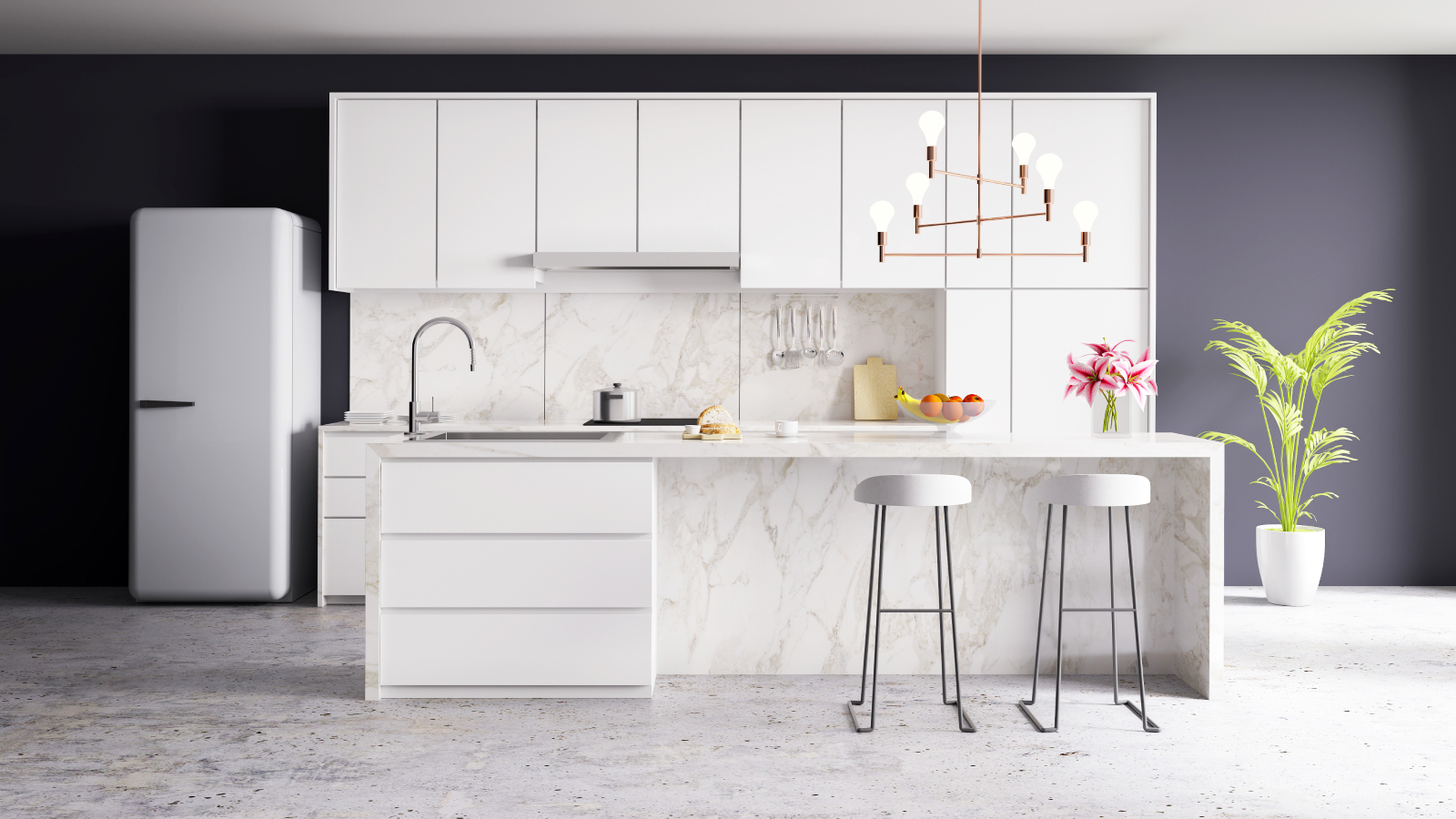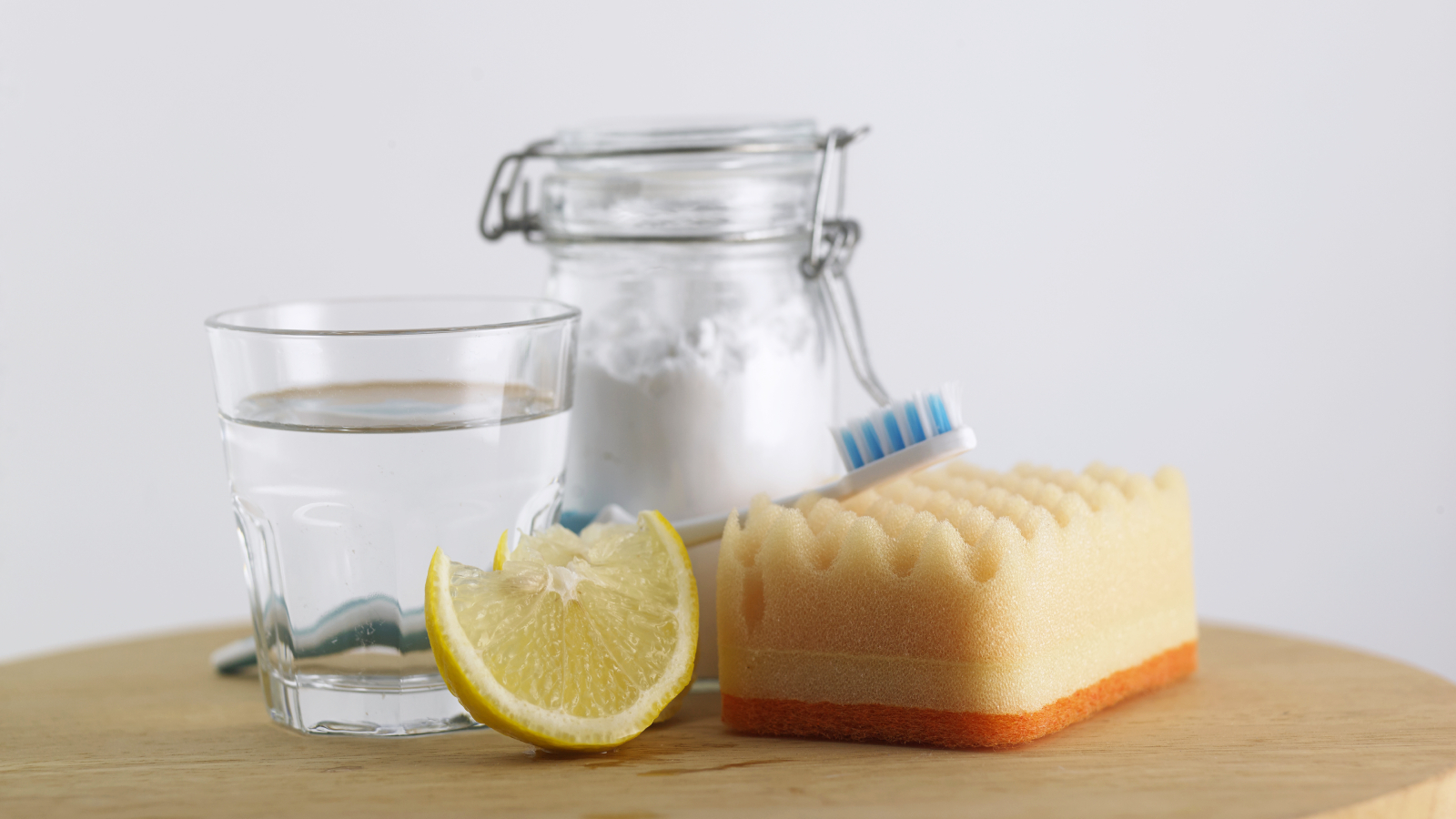Best Cleaning Supplies for Kitchen Cabinets

(Image credit: Getty Images)
If you're wondering how to clean kitchen cabinets and how often to do it, it actually depends on how much cooking you do and how many cooks use the kitchen. Kitchen cabinets and drawers have traditionally been used to store dry food goods and various other kitchen essentials such as dishes, utensils, small appliances, and pots and pans. Today, cooks also use kitchen cabinets to store cookbooks and liquor, along with snacks and cleaning supplies that need to be kept out of reach of young hands.
Most kitchen cabinets are made of hardwood or budget-friendly materials such as plywood or particleboard. Either way, it is important to clean your cabinets regularly to keep your kitchen fresh and sanitary. We look at products to quickly clean your cabinets as part of your kitchen cleaning routine and advise on how to prevent damage to the interior wood material and the outer finish. Get ready to roll up your sleeves! And once you've finished cleaning your cabinets you might want to take a look at our guide on kitchen cabinet organization ideas, afterward.
How to clean kitchen cabinets—preparation
Toss expired products and wipe containers
Your kitchen will look crisp and bright after a thorough cleaning of both the inside and outside of your kitchen cabinets. Since you'll be removing all items, including food, drink and kitchen essentials, this is also a great time to toss out expired staples such as old grains and consider replacing almost empty products. Also, spice containers and sauces can easily become sticky or grimy since we tend to reach for them in the middle of cooking. Wipe these items clean using a cloth and hot, soapy water and allow them to dry while you continue cleaning the cabinets.
Gather your cleaning products

(Image credit: Getty Images )
In your cleaning toolkit, you should have:
- Old toothbrush—to tackle interior corners and the curves and grooves of ornate or raised panel cabinet doors.
- Handheld vacuum—a great option to quickly remove food crumbs from upper cabinets and particles from lower cabinets.
- Soft bristle brush—to clean lower cabinets and drawers that may have dried food, oil, grime, and liquid spills.
- Cleaning cloths—a soft sponge or thick and soft cotton or microfiber cleaning cloth are best for cleaning wood cabinets.
Options for cleaning solutions:
- Degreaser—a mixture of warm water and baking soda or a 50/50 solution of white vinegar and warm water.
- Dishwashing liquid—a few drops of dish soap mixed with very warm water.
- All-purpose cleaner—that is gentle, made for wood, and has been spot tested to make sure it does not damage your wood finish.
- Wood oil and soap cleaners—such as Murphy's Oil Soap using 1/4 cup of soap per gallon of warm water.
When it comes to store-bought products, always follow the manufacturer's directions and do a spot test at a hidden location to observe how the cleaner reacts with your cabinets.
Wipe down with water first
To make the kitchen cabinet cleaning process more effective, first take a damp cloth and wipe any crumbs or liquid spills off shelves before proceeding with your cleaning products. Avoid using too much water, as it can damage the outer shell of your kitchen cabinets over time. Water can cause the finish to become dull, the wood to darken, and laminated panels to peel or separate. After wiping down your cabinets, be sure to wipe away any excess water.
How to clean kitchen cabinets in five steps
- Start from the top interior shelves and work your way down using your preferred cleaning solution—interior shelves may have a lot of crumbs and residue that a vacuum can remove before cleaning and wiping them down. Don't forget to spray and wipe the edges and sides of your cabinets.
- Once all interior shelves have been cleaned—you can degrease exterior cabinet doors where needed and clean them also.
- If you're using a spray cleaner—always follow up with a wipe down of clear water to remove cleaning product residue. When these products are left on wood surfaces to dry, they can dull the wood's finish over time. Likewise, when you clean your kitchen cabinets with soap and water, you should wipe the surfaces free of soap with a wet, warm cloth to prevent discoloration.
- Allow all surfaces to dry completely—before you replace the cabinet contents so that they are organized and neat.
- Finally, scrub knobs and handles—scrub the hardware with a toothbrush dipped in a 50/50 solution of vinegar and warm water. If needed, remove the hardware from drawers and cabinets to soak and clean separately.
Use degreaser if necessary
Start with a degreaser of your choice in any cabinets that are a sticky or grimy mess. Apply the degreaser with a regular cleaning cloth, and then let the solution sit for 10-15 minutes. This allows enough time to break down those thick, tough stains. This will also reduce the amount of elbow grease you'll need to use afterward.
Once the degreaser has done its job, wipe with a clean, damp clean cloth using a bit of pressure to remove food, grease, and liquids. If necessary, use your bristle brush to scrub off the grease on cabinet doors and use the toothbrush to get into interior corners. Thick grease build-up is best removed with a gentle scrub using a baking soda and water paste and a soft-bristled brush.
Ongoing cabinet maintenance
Perform a few routine maintenance tasks to keep your kitchen cabinets clean for longer periods of time. This includes:
- Dusting cabinets twice a month with a soft cloth
- Cleaning up spills as soon as they happen.
- Cabinets near the cooktop or range hood should be degreased once a month.
- Try to keep heat-producing appliances like coffee-makers and electric frying pans away from cabinets to prevent excess heat and moisture from damaging their surfaces.
If you've been inspired to get cleaning, you may be interested in our guides on how to clean a fridge, how to clean a stove top and how to clean your microwave.

Amy Hunt is an experienced digital journalist, currently working as Life Channel Editor at womanandhome.com. She began as the magazine's features assistant before moving over to digital as a News and Features Writer, before becoming Senior Writer, and now a Channel Editor. She has worked on other women's lifestyle websites previously too—including Woman's Weekly, Goodto.com, Woman, and Woman's Own. In 2019, Amy won the Digital Journalist of the Year award at the AOP Awards, for her work on womanandhome.com.
She is obsessive about everything homes and interiors—whether she's sniffing out the very best deal on a KitchenAid stand mixer or keeping up the latest Dyson release. And when she isn't editing or writing articles on interior trends or the latest home gadgets, she's passionate about books—you'll usually find her with her nose in a gripping thriller at the end of the working day.
Best Cleaning Supplies for Kitchen Cabinets
Source: https://www.womanandhome.com/homes/how-to-clean-kitchen-cabinets/